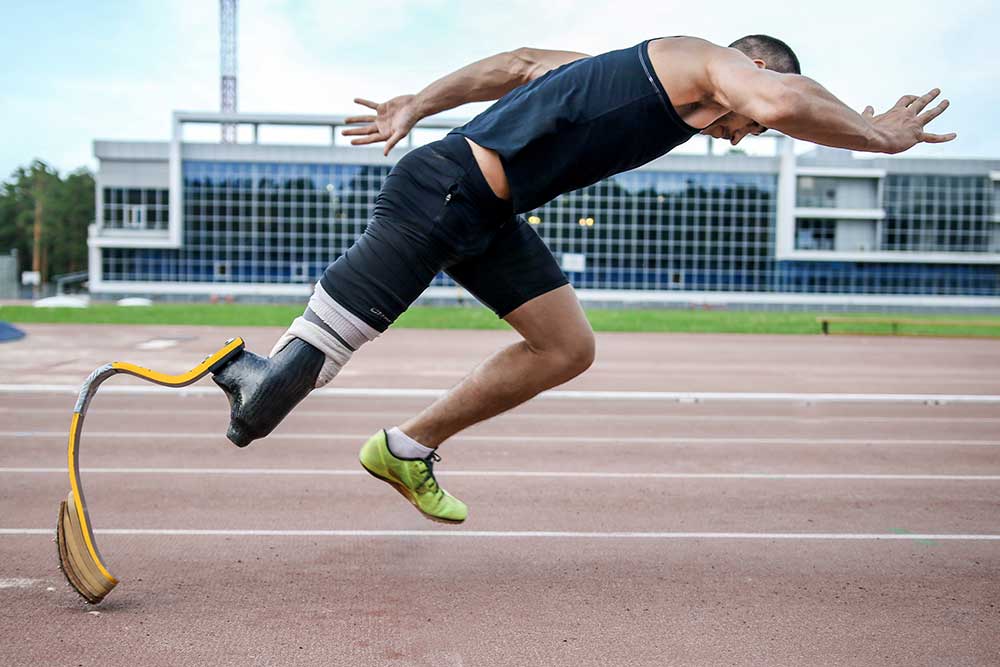Disclaimer: The information on our website is provided for general information purposes only. We make no representations or warranties of any kind, express or implied, about the completeness, accuracy, reliability, suitability or availability with respect to the website or the information contained on our website for any purpose. Any reliance on such information is therefore strictly at your own risk and we are not liable for any damages or losses arising out of or resulting from your reliance on any information contained on our website.
A prosthetist also known as an orthotist is a trained health care professional that designs and measures medical supportive devices called prosthesis. A prosthesis is an artificial device that is used to replace a body part that may be missing, malfunctioning, or partially or completely damaged.
Watch the video to learn what a prosthetist does:
How to Become a Prosthetist

To become a prosthetist you must earn a master’s degree in orthotics and prosthetics and must become a certified prosthetist (CP) before you can start practicing. All of these programs should have psychometrically validated certification standards and a set of educational criteria laid out by The American Board for Certification in Orthotics, Prosthetics, and Pedorthics, Inc. Courses in upper and lower extremity devices, spinal prosthetics, and materials used for fabrication are taught in these programs.
Once you graduate with your master’s degree you are eligible to get licensed to practice as a prosthetist or orthotist. To become certified you must pass a series of exams and complete a residency. The American Board for Certification in Orthotics, Prosthetics & Pedorthics (ABC), and the Board of Certification/Accreditation (BOC) offer these licensing pathways. Check with your state to ensure you take the correct one. Once you are employed or working in this career field there are mandatory continuing education courses one was adhered to during their career in addition to the Code of Professional Responsibility set for this occupation.
Job Description of a Prosthetist
The literal meaning of prosthesis is attachment or addition and application. If a person doesn’t have one or more external body parts or has damaged them, a prosthesis can be used to replace that external body part. Prosthetic arms, prosthetic legs, and similar prosthetics are quite common in cases of amputees and for those who have congenital deformities.
A prosthetist works closely with physicians, occupational therapists, and physical therapists to determine the needs of their clients. They measure the dimensions and note the nature of prosthetics that have been recommended for their patients. They find the correct prosthesis and then fit it to the clients affected limbs or body parts. They are also responsible for ongoing maintenance or adjustments of the prosthesis as needed. At times, prosthesis recommended by a physician may not be available and in such cases it is up to the prosthetist to find ideal alternatives or to tweak existing designs so the prosthesis fits.
Seldom does a prosthetist diagnose the need for prosthesis or gets involved in surgeries and operations prior to the need for a prosthesis. Most are employed full time and work for manufacturing companies followed by medical supply agencies. A majority of the time is spent in the office, but at times they may travel to the clients home or healthcare facility they may be admitted to. According to the Bureau of Labor Statistics there is faster than average growth in this industry so those seeking this career field will have good prospects.
Prosthetist Career Video Transcript
A prosthetist is someone who makes artificial arms or legs for individuals who have lost their limbs. Most of our patients that we see here are service members who have been injured in either the war in Iraq or Afghanistan.
I would start off a lot of times casting a patient over their residual limb. From that cast I would pour that up with plaster and have a positive mold of their limb and then from there we would modify that mold down a little bit and create a plastic socket or carbon fiber socket depending on their stage of rehab. We may go through a number of those sockets before we go to a carbon fiber socket like this here. Once we make this socket we really can’t make too many changes to it. But it’s very strong, very durable. It’s not going to break at all.
The socket would go over the residual limb and then from there we would fit either knee or a foot, or both. With arms, there’s a lot more wiring if you’re doing a myoelectric prosthesis which is a prosthesis that has a motor and a battery system and a microprocessor in it that will open and close from the flection of a muscle in their arm. It picks up an electrical signal in their arm and opens the hand and the other muscle would close the hand.
They have a thin layer of silicon that’s a duplicate of the other hand if they have that other side and they paint the inside of that hand to their skin tone, they can even put freckles, they can put veins in there, they can put hairs. Working with patients is the best. Seeing somebody stand up and walk you know, for the first time after they have been injured. Or see them being able to feed themselves with a new arm prosthesis. That’s my favorite part of the job.
Article Citations
Bureau of Labor Statistics, U.S. Department of Labor, Occupational Outlook Handbook, Orthotists and Prosthetists.
National Center for O*NET Development. 29-2091.00. O*NET OnLine.

